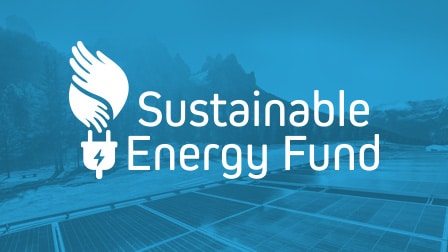SCHNECKSVILLE, PA., June 3, 2025—Sustainable Energy Fund (SEF) has announced the Family Promise of Carbon County...
» Read MorePrioritizing Embodied Carbon
Building’s Impact on Global Emissions
Building operations are often the center of discussions regarding a building’s environmental impact and are frequently the main focus when looking to increase energy efficiency. Considering building operations make up 28% of global CO2 emissions, 11% of which is from non-residential and 17% for residential, there is a lot of potential for achieving energy reductions through changes to the operation of a building (UN Global Status Report 2020). The buildings construction industry produced 10% of global emissions while other industries represented 32% and transportation 23%. However, an aspect of a buildings’ impact on global emissions that is often overlooked is the construction of that building and the building materials, also known as embodied carbon. The building and construction sector accounted for 35% of final energy use and 38% of energy- and process-related emissions in 2018, highlighting the potential role of embodied carbon in our climate future (UN Global Status Report 2020).
The Role of Embodied Carbon and How It’s Measured
Embodied carbon, or the total amount of global emissions that are generated and are associated with the extraction, processing, manufacturing, and transportation of materials, can be calculated for any product (Circular Ecology). While it may sound simple at first, calculating the energy used to create building materials becomes daunting when considering all the stages from sourcing to demolition. Some of the various stages in which energy is put into materials are the extraction of raw materials, transportation to factory, manufacturing goods, transportation to site, and, finally, the construction of the building. The emissions generated during these stages are calculated through the ‘cradle to site’ approach to embodied carbon, which is when the calculations stop once the product is delivered. For the ‘cradle to grave’ approach to embodied carbon calculations, the emissions during the demolition building, haul waste materials, and its life in landfill/recycle are calculated as this approach considers the entire life of the product. Furthermore, the ‘cradle to cradle’ approach prioritizes the recyclability of the product during the design and production phases so that the entirety of the product and all its components are recycled or returned to the ecological system (Sustainability Guide).
Hot Spots for Embodied Carbon and Reduction Strategies
Steel, concrete, and other foundation and structural materials that are used for buildings contain the highest embodied carbon in a building. These materials are hot spots for consideration of a low embodied carbon design as the manufacturing of concrete, steel, and iron is responsible for 11% of annual GHG emissions (UN Global Status Report 2019). Steel fortunately has the characteristics to be easily recycled multiple times while maintaining its strength, making steel one of the most recycled metals in the world (CSSBI). Concrete does not share this, having to be down-cycled to a lower quality product while being recycled. Recycling will continue to play a role in reducing the embodied carbon of buildings but building design and other construction related decisions will have a bigger impact on emissions. For instance, careful sourcing of these materials can reduce the embodied carbon of the building. For instance, if construction is taking place in the United States, prioritizing the purchase of materials that are extracted and manufactured within the United States can reduce the embodied carbon of the materials. From there, selecting the steel supplier located closest to the construction site can further reduce embodied carbon through reductions in transportation. Additional embodied carbon savings can also be achieved through efficient building design that reduces the required foundation and structural materials while maintaining structural safety (Building Green).
Developments of Embodied Carbon
As the building industry acknowledged their impact on global emissions, more attention was given to the full value chain of their products and their potential environmental performance. Both manufacturers and customers developed more interest in this practice, leading some manufacturers to release environmental production declarations (EPDs) voluntarily (Science Direct). EPDs, a lifecycle assessment-based tool, are independently verified and publicly shared and contain the environmental impact of a product from extraction to end of life (EPD International).
To further the prioritization of decreasing embodied carbon in building materials, members of the global building industry formed MaterialsCAN, or Materials Carbon Action Network (Kingspan). This network contains manufacturers of ceilings, insulation, and flooring, some of the most common products used in buildings. MaterialsCAN aims to improve embodied carbon awareness via client, industry, and external partnerships (Interface).
Skanska, a member of MatericalsCAN, partnered with C Change Labs and Microsoft to develop a solution for calculating and evaluating the embodied carbon of building materials. The Embodied Carbon in Construction Calculator (EC3) tool was released in late 2019 and allows users to compare the environmental footprint of building materials, allowing them to find the optimal path towards reduction of global carbon emissions in their construction (Skanska).
Conclusion
While it remains secondary in importance to operational emissions, embodied carbon is becoming better known by people within the construction industry, especially in the green building world. Large manufacturers of building materials are acknowledging its role in increasing global industry emissions and taking necessary changes to reduce the industry’s overall impact. Understanding the origins and manufacturing of construction materials will allow decision makers to make more informed decisions when aiming for a lower environmental impact. As construction design grows a bigger focus for embodied carbon reduction and tools such as EC3 are developed and adopted, cradle-to-cradle analysis and full transparency of products will become more common and will play a role in creating a better, more sustainable energy future.







